- MOE
- National Parks of Japan
- Daisetsuzan National Park
- Guide of Highlights
main body
Highlights of Daisetsuzan National Park
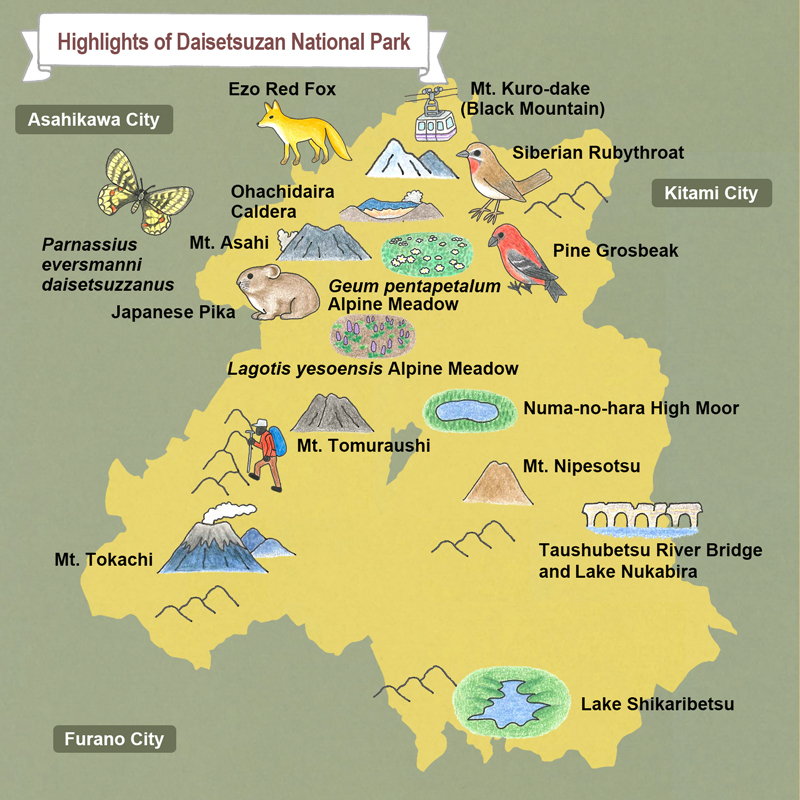 Ezo Red Fox
Mt. Kuro-dake
Siberian Rubythroat
Pine Grosbeak
Numa-no-hara High Moor
Mt. Nipesotsu
Taushubetsu River Bridge and Lake Nukabira
Mt. Tokachi
Mt. Tomuraushi
Lagotis yesoensis tatewAlpine Meadow
Sieversia pentapetala Greene Alpine Meadow
Ohachidaira Caldera
Mt. Asahi
Japanese Pika
Parnassius eversmanni daisetsuzanus
Lake Shikaribetsu
Ezo Red Fox
Mt. Kuro-dake
Siberian Rubythroat
Pine Grosbeak
Numa-no-hara High Moor
Mt. Nipesotsu
Taushubetsu River Bridge and Lake Nukabira
Mt. Tokachi
Mt. Tomuraushi
Lagotis yesoensis tatewAlpine Meadow
Sieversia pentapetala Greene Alpine Meadow
Ohachidaira Caldera
Mt. Asahi
Japanese Pika
Parnassius eversmanni daisetsuzanus
Lake Shikaribetsu
Asahidake Onsen (hot springs)
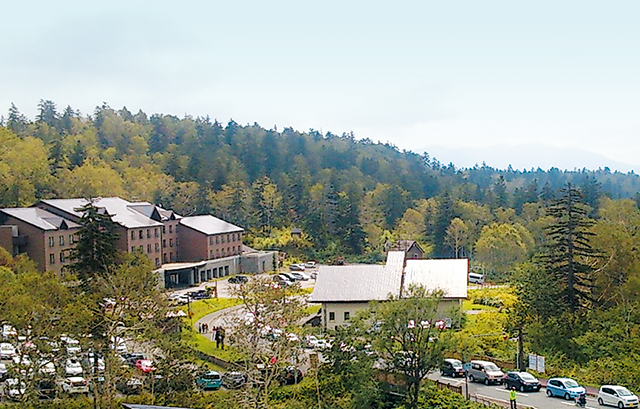
Asahidake Onsen (hot springs)
It is a hot-spring district (1,050 m above sea level) spreading across the foot of Mt. Asahi. Along with the Sounkyo Onsen, it is the mountaineering base in the Omote-Daisetsu area. During the winter, it is one of the popular skiing spots, enjoying the longest ski season in Japan (From November to early May).
Mt. Asahi
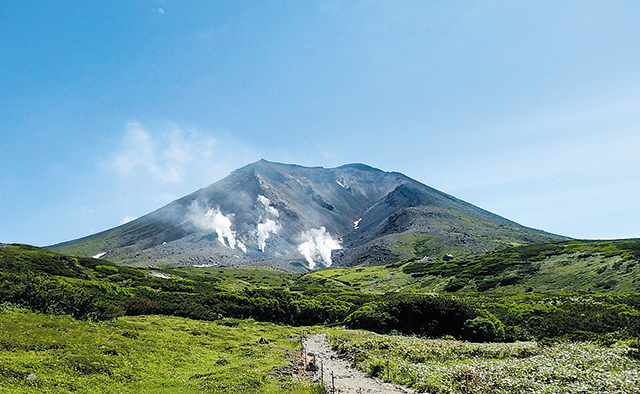
Mt. Asahi
After taking a ropeway from the Asahidake Onsen and getting off at Sugatami Station, the sight ahead is the crater of Mt. Asahi spewing a great deal of smoke. There is a trail that travels by way of Sugatami Pond and leads to the mountaintop of Mt. Asahi, the highest peak in Hokkaido, in two and a half hours.
Ohachidaira Caldera

Ohachidaira Caldera
The 2 km diameter depression in the center of Mt. Daisetsu is referred to as 'Ohachidaira.' The caldera is a remnant of the explosion of the newly formed Mt. Daisetsu approximately 30,000 years ago. Take a trip around 'Ohachidaira' along the outer rim of the crater.
Bogakudai Observatory
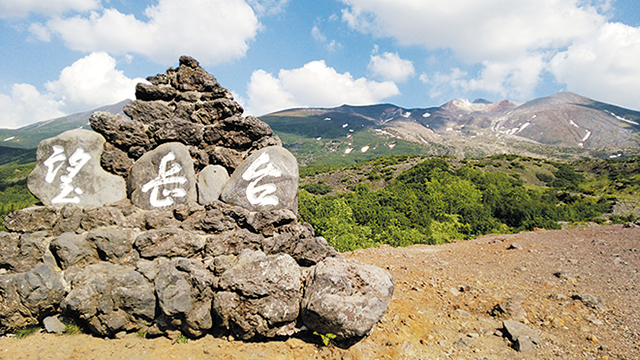
Bogakudai Observatory
The Bogakudai Observatory can be easily accessible via a roadway connecting Shirogane Onsen and is a vista point facing the Mt. Tokachi emitting volcanic fumes. A stretch of the gravel ground is a large habitat for the Pennellianthus frutescens.
Mt. Tokachi
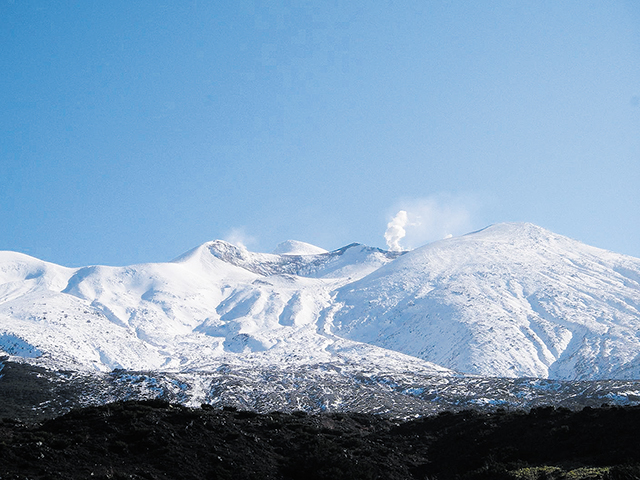
Mt. Tokachi
The peripheries of the mountaintop of Mt. Tokachi with ongoing volcanic activity have a number of craters including the Taisho Crater and the Grand Crater. Climbers are advised to keep their eyes on the information on volcanic activity at all times.
Mt. Tomuraushi
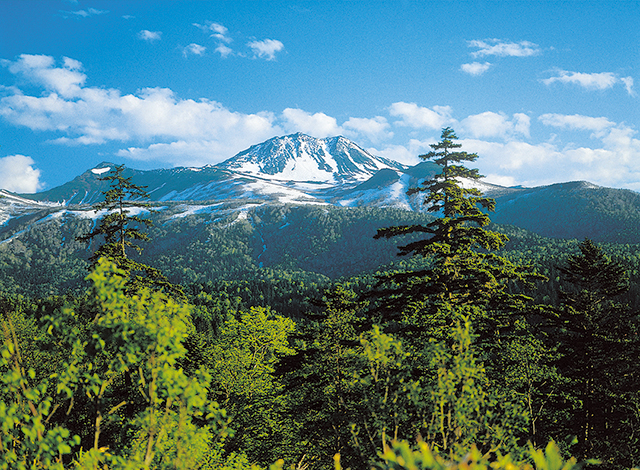
Mt. Tomuraushi
Situated on the border of Omote-Daisetsu and Higashi-Taisetsu, Mt. Tomuraushi is a mountain (2,141 m above sea level) that has been honored as Mt. Daisetsu's Annex. Mountaineering on Mt. Tomuraushi requires careful planning as climbing accidents occur every year.
Numa-no-hara High Moor

Numa-no-hara High Moor
A high moor located at 1,420 m - 1,460 m above sea level on a plateau in the center of the Mt. Daisetsu range. Ponds of various sizes are apparent. Also known as 'the inner garden of Mt. Daisetsu.' Designated as a National Natural Monument.
Mt. Kuro-dake (Black Mountain)
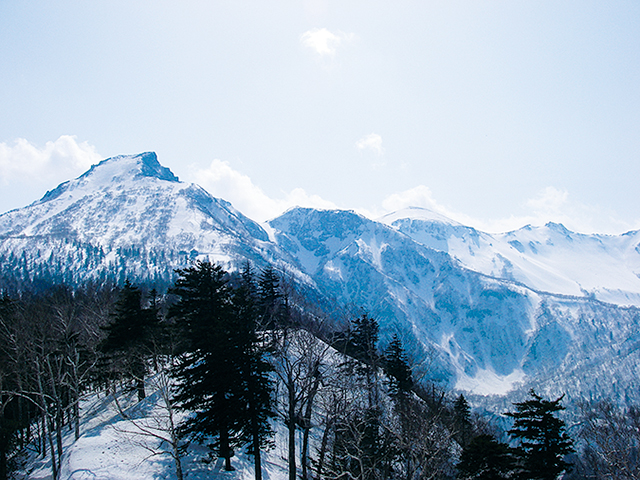
Mt. Kuro-dake (Black Mountain)
The summit of the Mt. Kuro-dake (Black Mountain) can be reached by taking a ropeway and lift, and by walking for about an hour. The mountaintop affords a panoramic view of the entire Mt. Daisetsu, commanding Mt. Aka-dake (Red Mountain), Mt. Hakuun (White clouds Mountain), Mt. Hokuchin, and Mt. Ryoun.
Kurodake Ropeway

Kurodake Ropeway
Use the ropeway and lift on Mt. Kuro-dake (1,984 m above sea level) in the Mt. Daisetsu range for the journey from the base of the mountain to the seventh station at a height of 1,500 m above sea level. See the charm of Mt. Daisetsu with the spring and summer alpine plant life, the red leaves of fall, and the winter snowscape.
Sounkyo Onsen (hot springs)
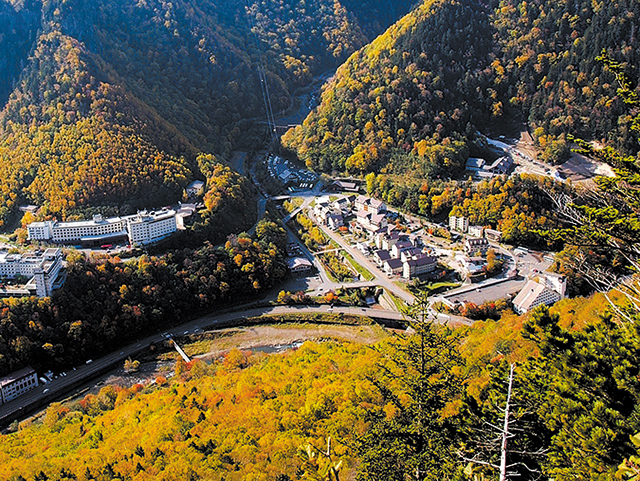
Sounkyo Onsen (hot springs)
Located along a major route connecting Asahikawa with Abashiri and Obihiro, it is the largest hot-spring area in the northern Hokkaido that serves as a major base for tourist attractions around Hokkaido. It is also known as a mountaineering base in the Omote-Daisetsu area.
Daisetsu Kogen Onsen (hot springs)
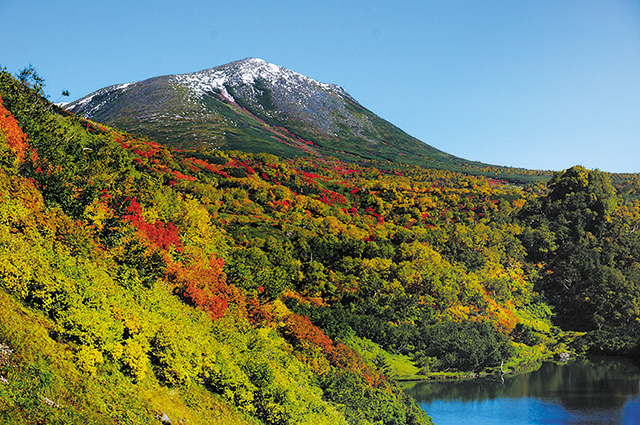
Daisetsu Kogen Onsen (hot springs)
The hiking route that starts from Daisetsu Kogen Onsen go around marshes is staffed with observation staff for brown bears. Before setting off, visitors are advised to listen to a lecture to learn about the rules at the Brown Bear Center located at the trailhead.
Nukabira Gensenkyo (hot springs) /Lake Nukabira

Nukabira Gensenkyo (hot springs) /Lake Nukabira
The Nukabira Gensenkyo serves as a base for tourist attractions around the Higashi-Taisetsu area and attracts widespread popularity as a natural-flowing hot springs. Lake Nukabira is a manmade lake created by the electrical dam completed in 1956. It is also a place to enjoy the scenes of the lake that has been acclaimed as a place of scenic beauty with the mountains of Higashi-Taisetsu in the backdrop.
Taushubetsu River Bridge and Lake Nukabira

Taushubetsu River Bridge and Lake Nukabira
A concrete arch bridge on the old National Railway Shihoro Line, remaining in Dam Lake Nukabira. Commonly referred to as the 'Megane Bashi.' Underwater during summer, it becomes visible when the water level of Lake Nukabira drops around January, leading to its naming as the 'phantom bridge.'
Mt. Nipesotsu
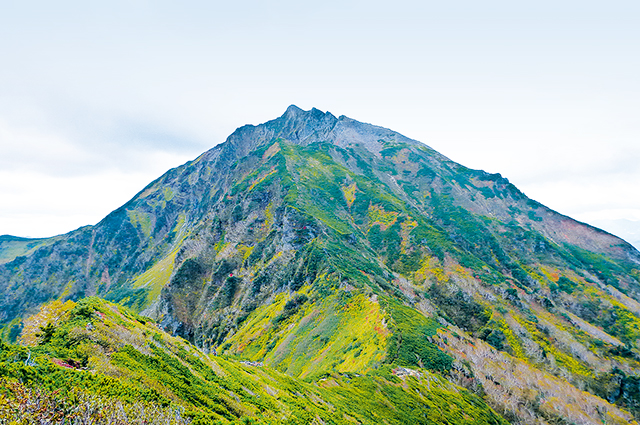
Mt. Nipesotsu
Set in Higashi-Taisetsu, it is an independent peak standing precipitously at 2,013 m above sea level. The rocky stretch of piled-up lava is a habitat for Japanese pika that sometimes makes an appearance among the rocks.
Lake Shikaribetsu

Lake Shikaribetsu
It is the only natural lake found in Daisetsuzan National Park where visitors can enjoy a landscape of lakes exhibiting an outstanding natural beauty surrounded by forests. The Miyabe charr, which is a subspecies of the Dolly varden, makes its only habitat in Lake Shikaribetsu, a lake known to be formed by the eruption of a volcano damming a river.
Wildlife & Plants
Lagotis yesoensis tatew Alpine Meadow

Lagotis yesoensis tatew Alpine Meadow
Daisetsuzan National Park contains large fields of flowers. In July, the fields in the area around Mt. Koizumi, Takanegahara, and Mt. Kaundake Lagotis yesoensis tatew alpine meadow unique to Mt. Daisetsu.
Sieversia pentapetala Greene Alpine Meadow

Sieversia pentapetala Greene Alpine Meadow
Daisetsuzan National Park contains large fields of flowers. The Sieversia pentapetala Greene flower fields bloom at Susoaidaira in July.
Parnassius eversmanni daisetsuzanus

Parnassius eversmanni daisetsuzanus
A member of the primitive Papilio xuthus species, with beautiful, semi-transparent yellow wings. One of five species of alpine butterfly found in Hokkaido. Found only on Mt. Daisetsu. Designated as a National Natural Monument.
Pine Grosbeak (Pinicola enucreator)
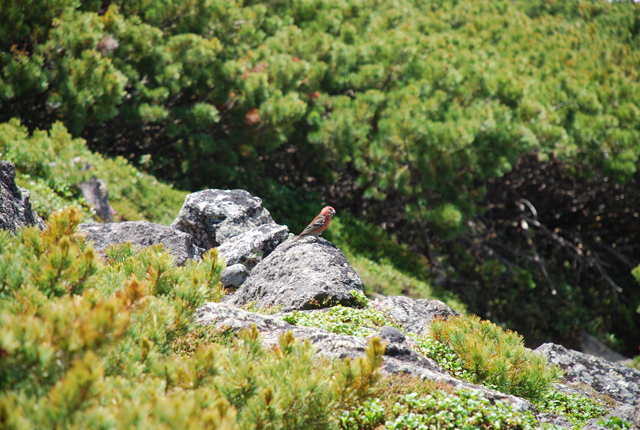
Pine Grosbeak (Pinicola enucreator)
The male is characterized by its reddish color. Pinus pumila is breeding area on Mt. Daisetsu. Often seen in pairs during the summer reproductive season.
Siberian Rubythroat (Luscinia calliope)

Siberian Rubythroat (Luscinia calliope)
The male has an orange throat. Perches on the tips of shrubs and bushes in an obvious pose, emitting a loud warble. Often seen in the forests of Mt. Daisetsu.
Japanese Pika (Ochotona hyperborean yesoensis)
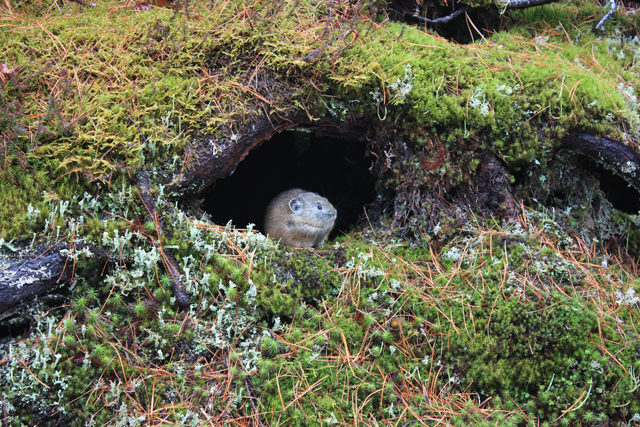
Japanese Pika (Ochotona hyperborean yesoensis)
Referred to as a living fossil. Living on rocky areas at cold, high altitudes in central Hokkaido (e.g., Mt. Daisetsu, Kitami Mountains).
Ezo Red Fox (Vulpes vulpes schrencki)
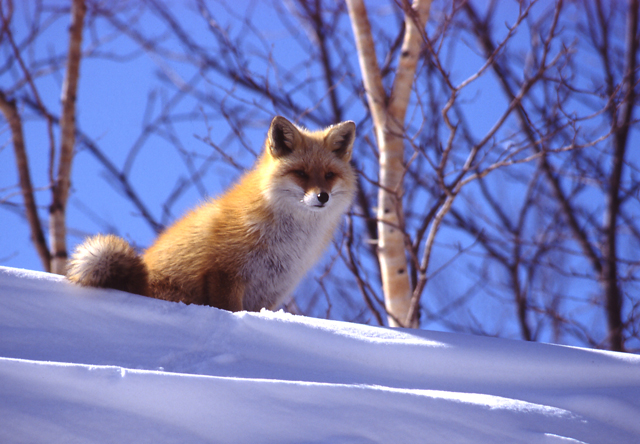
Ezo Red Fox (Vulpes vulpes schrencki)
A subspecies of the red foxes family ubiquitous to the Northern Hemisphere. Seen throughout the Daisetsuzan National Park.
Activities
Mountain Climbing
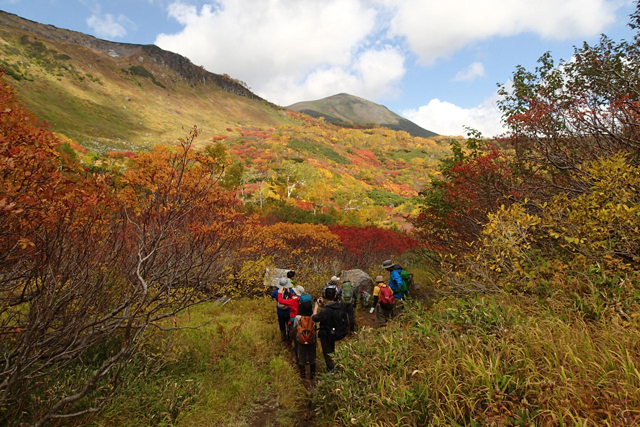
Mountain Climbing
The National Park includes such peaks as Mt. Asahi, Mt. Tomuraushi, and Mt. Tokachi. Each section of the mountaineering track is evaluated in terms of difficulty, and the overall sensation experienced by mountaineers, into five 'Mt. Daisetsu Grades.'
